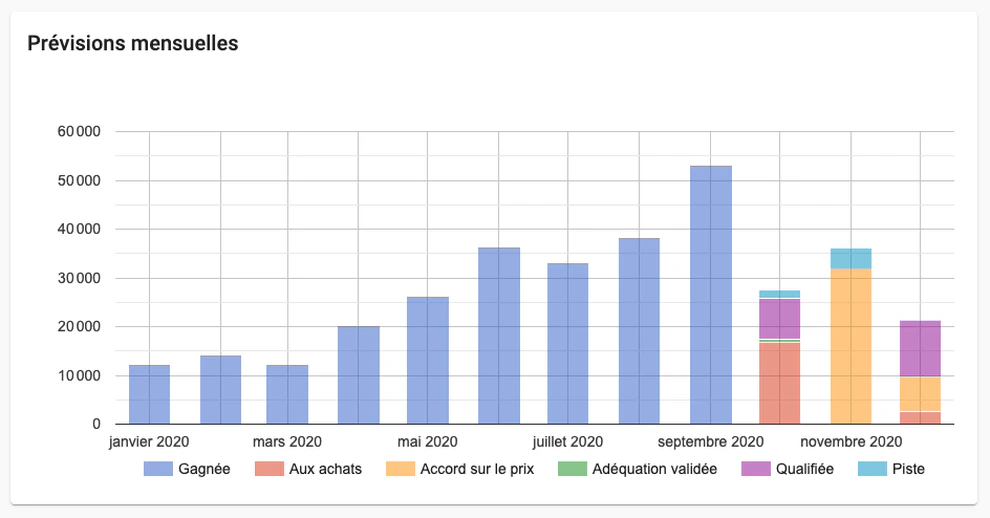Sales process: definition
The sales process describes the different stages (or phases) that a sale goes through. Although there are exceptions, sales made by a company or by a freelancer generally follow a common guideline. A business, or opportunity, usually begins with a “lead”, that is to say information or contact that suggests that a sale could be made to this contact or his company.
Exchanges will therefore begin and then develop. You will then collect more and more information. At the same time, you will have the opportunity to convince of the relevance of your products or services…
You will also find that there is no adequacy at all, in which case it is useful to know as soon as possible so as not to waste time on this case doomed to loss.
Other interlocutors will probably participate in the purchase decision, and you will discover competitors. Eventually, you may win or lose the deal.
The sales process therefore consists in identifying the different key stages, as well as the elements that characterize them: information to be collected (for example, the expected date of purchase, or the budget), and results to be obtained (for example: confirmation that the product or service meets the expectations of the prospect, whether there are competitors or not).
Putting it into practice in Corymbus
The Corymbus CRM offers by default a sales process with several sales steps (or opportunity statuses). They describe the progress of a deal (or opportunity) during the sales cycle. Each step has a name and corresponds to a probability of winning the case ranging from 0 to 100%:
- Track: 10%
- Qualified: 20%
- Validated suitability: 30%
- Price agreement: 60%
- Purchasing: 80%
- Won: 100%
- Lost: 0%
Probability represents the chances that the case will be won. Thus, it is considered to have 2 out of 10 chances of signing a qualified opportunity, therefore it is necessary to weight its amount at 20% to consolidate the overall forecast revenues. For example, if you expect this sale to bring in €20,000 if you win it, it will count for €4,000 in your business forecasts. This default probability is relevant in many cases, but may be inappropriate in yours. It is then up to you to adjust it. Similarly, all these steps are probably not relevant in your case. For example, you may never go through the purchasing department, if you sell mainly to VSEs or freelancers).
You can then modify, add and delete steps according to the way you work and handle your business: if in your environment, you have less than a one in 10 chance of leading a lead to the signature, change the associated probability by 10%, and go to 5%.
This information enables the Corymbus CRM to totalize and weight revenues. Month by month, deal by deal, it builds up your past and forecast sales. The monthly forecast graph available on the dashboard provides a summary.
How to define your sales process
Here are some questions to ask yourself to adapt the sales process to your needs:
- What were the main phases of their sale in the last 10 deals (won or lost)?
- What are the most common ones in the way you manage your sales ?
- How many of them did you earn?
- What was the decisive information that allowed you to move forward in the sale of these business (for example: meeting with a new interlocutor, his role, his contact details; identification of competitors ; information on whether or not you are (or not) the preferred supplier regardless of the price; product or service, among your offer, which would be the subject of the sale; date on which the decision will be made, date on which the sale is concluded; reasons why the customer needs you or your competitors)
Once the sales process is defined, you can create a note template to inform in each activity, the different information required to advance an opportunity to each of the steps. So every time you create an opportunity, you insert that template into its notes, and you’ll be able to review and update them to think about gathering all the necessary information at the right time throughout the sales cycle.
To go further you can read the article on the follow-up of unpaid debts. You can set it up simply through a proper sales process.


